Dear Barbara,
The weather in Prague is pleasant. A few clouds, some refreshing wind, and a weak sun above my head. It’s not my first time here. I visited Prague almost a decade ago, but I don’t remember that much. You see, back then, I did the typical Prague sightseeing itinerary. But this time, I plan to dig more into the city. I’m here for a reason, as you know.
The train from Berlin to Prague was packed. I traveled together with a group of German students. I never had the chance to go abroad with my schoolmates, which made me sad. But it was joyful on the train, making the ride even more pleasant. The landscape after Dresden is magnificent: slopes, tall trees, and picturesque villages.
It took more than four and a half hours to reach the capital of the Czech Republic. The central train station of Prague is unimpressive compared to the ones you see in Germany. The first impression is actually odd for a capital: you exit the train station and find yourself in the middle of a park. There’s no traffic in front of you, just people sitting on benches enjoying the sudden sunshine.
I look towards the end of the park: that’s where the beautiful architecture of Prague begins.
Speak, memory: Prague edition
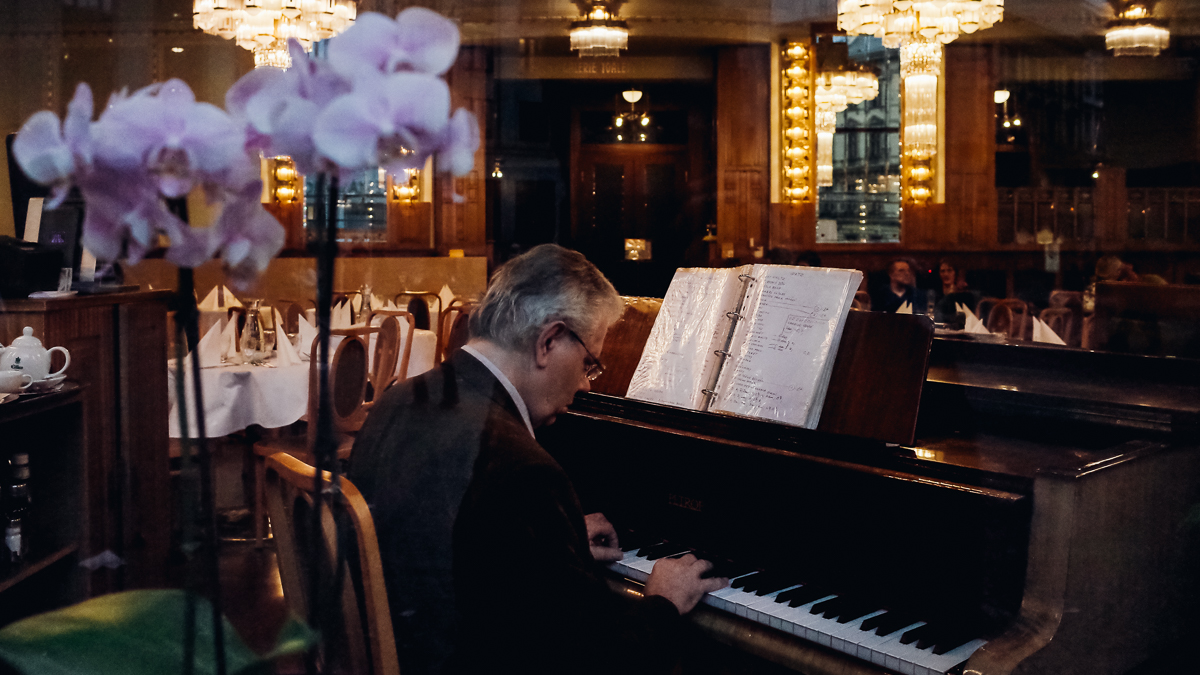
After checking in at the beautiful Seven Wishes aparthotel, I am urged to explore the city. Prague, the city of Franz Kafka, is out there, and I can’t wait to discover it. But I have traveled sleeplessly, and I think I have to save some energy for the coming days. Instead, I decide to wander without a map to see if I could recall anything at all from my previous journey.
But I fail. Sure, I remember the Astronomical Clock of Prague and the Wenceslas Square, but these are things that you don’t even have to remember: you know them already. I want to remember who I was back then, what I did, and where I slept. To my surprise, not a single place looks familiar. I visited Prague the first year I moved to Berlin; it was not a century ago, it’s ten years. And yet, I can’t remember anything.
I walk towards the Astronomical Clock, where trillions of people are observing it. The place is full of tourists, and I can’t even walk. I have to let myself go with the flow. Then I keep walking, and I end up at the Charles Bridge. Sure, I remember the bridge, but it doesn’t count: I’ve seen it in photos and on television several times.
I’m about to return to the hotel and call it a day. On the one hand, I’m happy: although it’s my second time in Prague, it feels like it’s the first. But I take a wrong turn, and I walk past a restaurant that seems familiar. I step closer; and closer. There is a piano player behind the flowers, and waiters and waitresses wear elegant clothes. And then I remember: I ate here once.
I wonder why. The place looks touristic. But I know the reason: the place resembles a faux-idea of Old Europe. It seems to be in decay and nothing special anymore. But back then, I thought it was a leftover of a world that doesn’t exist anymore. I had to experience it in order to save it. Right now, ten years later, it doesn’t matter anymore…
And just like that, I recall my first actual memory from Prague.
An upside-down horse
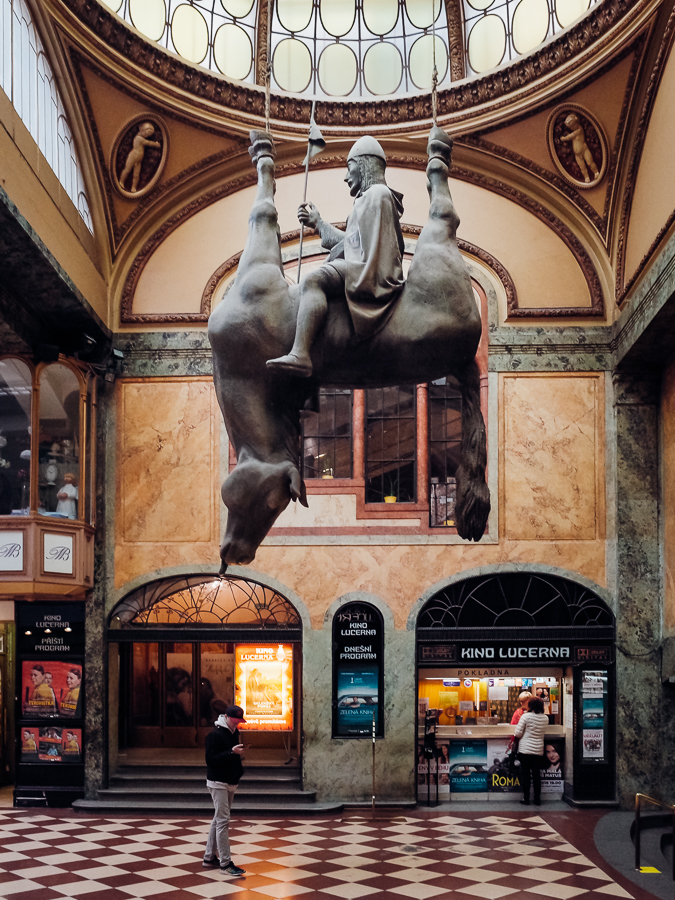
Prague is full of oddities. When I enter the famous Lucerna Palace, I see a few people standing in front (or better: beneath) a statue. Lucerna Palace is one of the most iconic buildings in the city, and in the basement, there are shops, a cinema, and theaters. But what I find fascinating is that it hosts a provocative statue.
The artist David Černý has created the statue of a king riding his horse upside-down. It seems that it’s a reference to the statue of Saint Wenceslas in Wenceslas Square. However, the locals say that this statue named Kun is mocking the former Czech president Vaclav Klaus. The statue in Wenceslas Square appears to have a historical dynamic, but the horse in Lucerna Palace is definitely dead.
Architecture and books in Prague
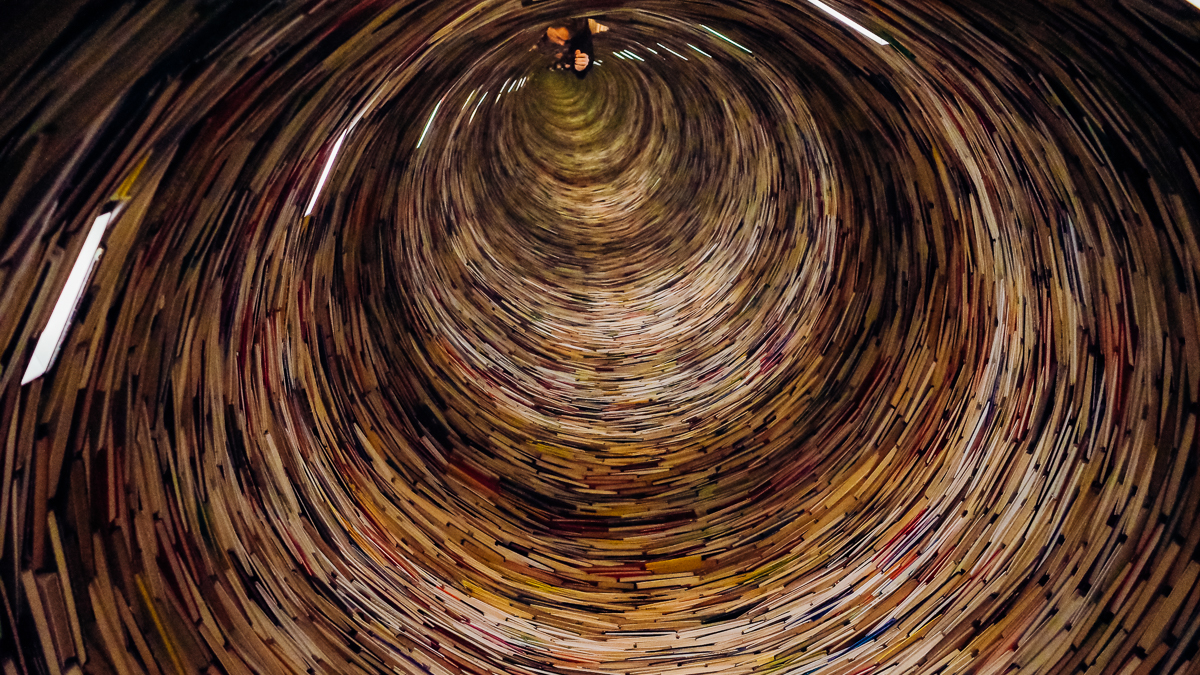
Prague is a showcase of elegant architecture. Walking down the street, I observe buildings from every architectural style: Baroque to Renaissance, Art-Nouveau to Gothic. It is a stunning city to walk through, and there are countless things to do in Prague.
Every walk, long or short, ends in front of a sculpture or a building. One of the most impressive stops I had was the one in the Municipal Library. If you are a bibliophile, you will appreciate the sculpture inside the Library. Its name is “Idiom,” and it resembles a never-ending tower -a bit Kafkaesque, right?
Artist Matej Kren has pilled hundreds of books in order to create that tower-like installation. Despite being tempting, you can’t obviously remove a book; if you could, the whole construction would collapse. You can look inside that tower: the artist placed mirrors that give the illusion of an infinite tower. You will see colorful chaos if you place your head in the tower’s opening.
That bizarre book tower originally appeared in Sao Paulo’s International Biennale in 1995. The installation is awe-inspiring, and you will probably see a couple of visitors at any time of the day. However, while visiting the Idiom installation in Prague, remember that patience, like knowledge, is a virtue: most fellow visitors will pose in awkward positions for a selfie. The truth is, though, that if you try to take a photo of the interior, you will be included in it due to the mirrors of the installation…
Prague is a beautiful (and tiring) playground
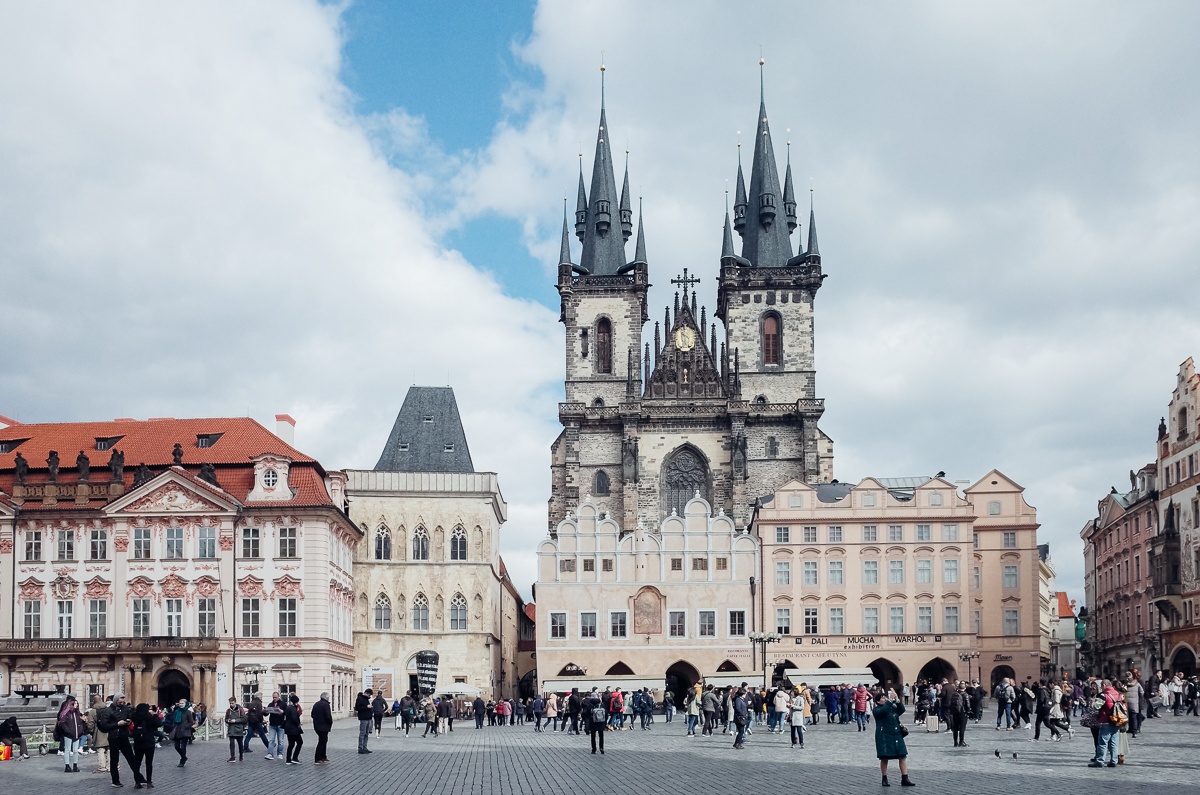
Sooner or later, Prague reveals all its layers of beauty. It’s not only the architecture or the oddities. It’s more of a feeling of satisfaction when you come across the city’s most celebrated spots. The Wenceslas Square, with all the vibrancy; the Astronomical Clock where all the fingers of people are pointing towards the fingers of the clock; the Charles Bridge, of course, with the constant comings and goings.
Apart from those ultra-touristic spots, several others attract people. Unfortunately, beauty and attention always come at a price. For most visitors, these spots are less of a landmark and more of a place to show off. Silly posing and excessive ways of dressing go together in Prague. People of both sexes and every age seek others’ attention and, eventually, of the city itself. It’s less about the Astronomical Clock and more about how beautiful you look in front of it. Selfie sticks serve as an extension of ego, and it’s not so rare to stumble upon one -either a selfie stick or an ego.
Mass tourism has released wild instincts, and some places get truly affected. There seems to be an invasion of narcissists lately in cities like Prague. Seeing a legendary city becoming a playground for the masses is not nice. I know: I can always turn my head to the other side. But in Prague, whenever you turn your head to the other side, another person is showing off. And then another; and another.
Best exchange rates in Prague (scam)
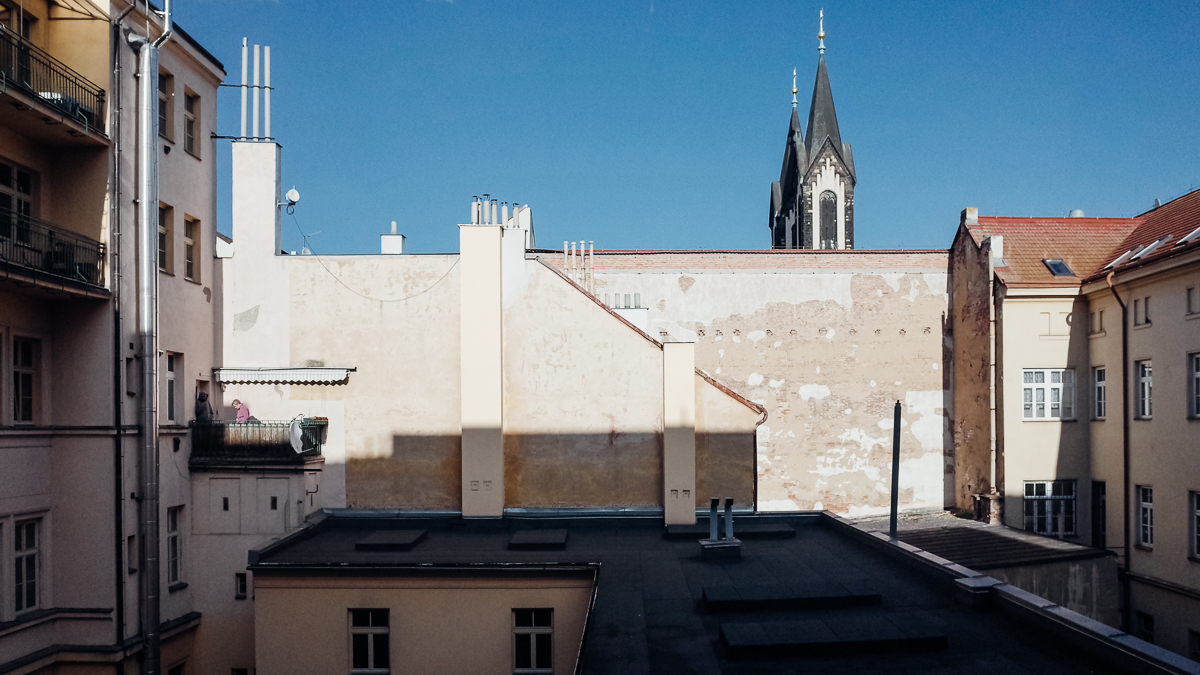
I walk around Republic Square, searching for attractive faces. I’m not sure if I would like to talk to them or just shoot candid portraits. This is a busy place with a daily street market and people embarking on the trams. And, of course, such places always attract odd guys.
One of them, a man in his early fifties most likely, approaches me. I have my small camera in hand and look like a tourist. He wears an old-fashioned suit, and he introduces himself. “If you’re looking for a place to stay, I rent a flat nearby,” is the opening line. I tell him that I already have a place to stay in Prague. But the guy insists: “Would you like to exchange some money? I can help you. I’m offering the best exchange rates in Prague”, he says, and then he adds: “no shit.”
Well, I’m not interested. But here is the thing: I’m curious. I pretend that I’m interested in this exchange. Apparently, there are no rates here: “I give you X Czech crowns; you give me Z euros.” Fair enough. “Yeah, but I would like to see the money first,” I react. “I don’t know you, you don’t know me,” I continue. The guy means business, so he puts his hand in his pocket. He shows me the money: it’s a bunch of old Hungarian forints.
“Um, these are forints from Hungary.”
“Damn, you are right. Meet me in an hour. I’ll go get crowns, alright?”
Sure thing.
Fred, Ginger, Sigmund and 800 dollars: why 1996 matters
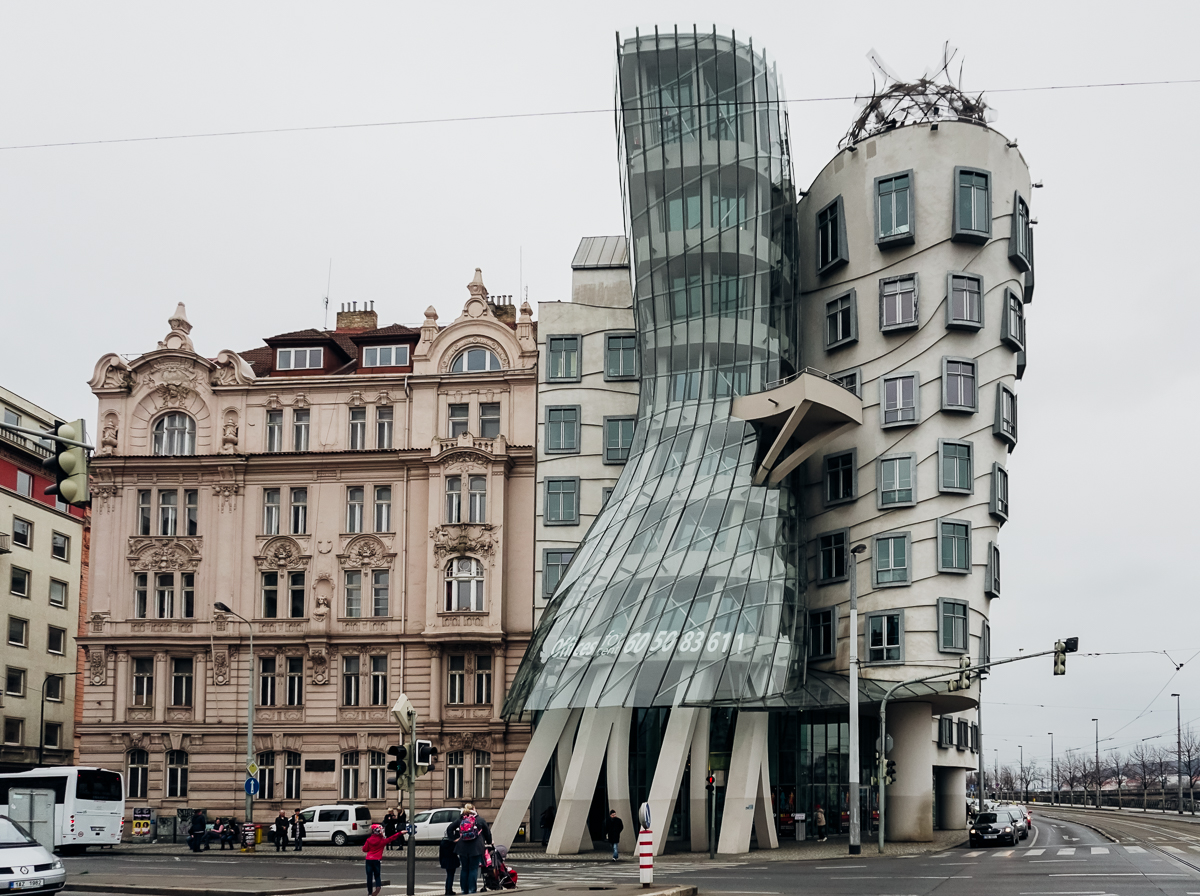
The Dancing House in Prague
In every journey, there is always a day that I walk as if there is no tomorrow. In Prague, that’s the third day. I walk like a maniac, and I refuse to use public transport.
Down at the river Vltava, there was once upon a time a spare plot. It was not that long ago: in 1992. I still can’t imagine how this spot could have been spared back then. That’s where Frank Gehry and Vlado Milunić decided to build one of the most iconic buildings of modern architecture: the Dancing House.
The building was ready in 1996, and it, of course, brought controversy. Indeed, the architecture is unconventional. This building consists of two parts, one static and one very dynamic. Supposedly, the architects wanted to highlight the transition of Czechoslovakia. This resulted in this impressive building, which, of course, seems a bit odd squeezed between Gothic and Baroque ones.
Frank Gehry called it Fred and Ginger, from the famous dancers Fred Astaire and Ginger Rogers. Later though, he became skeptical about the nickname, mainly because he didn’t want to introduce kitsch in a city like Prague. Everybody calls it the Dancing House of Prague nowadays.
It’s the second time I have seen the Dancing House of Prague, and I’m still unsure if I like it. It’s definitely impressive to see it; compared to the other buildings, it seems ready to take a walk down the Vltava river. But, on the other hand, it is indeed a bit incompatible with the area. But minutes later, while waiting for the tram and looking at the building, Italo Calvino comes to mind. I think of the Invisible Cities. Maybe this could be a building for one of Calvino’s cities.
Poor Freud
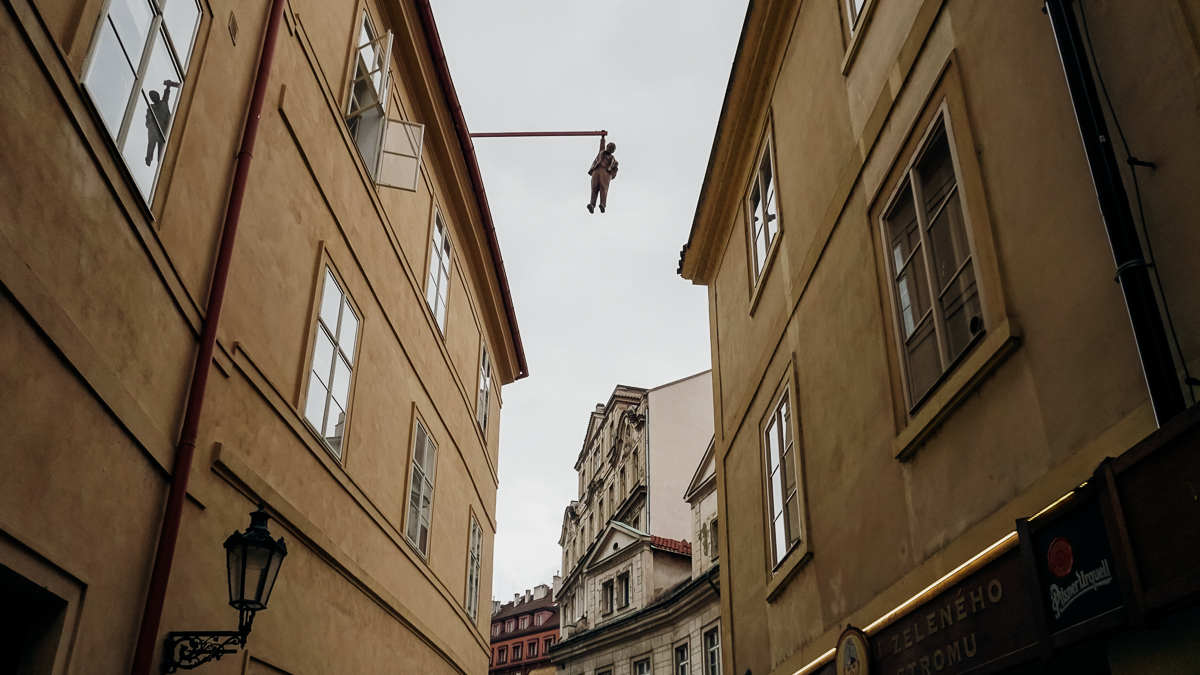
I think that David Černý is omnipresent in Prague. He is everywhere. There are tons of his sculptures around the city (the most notable are the Tower Babies), but there is one that I find particularly interesting.
In a less busy street in the Old Town of Prague, there is a man figure in the air. He is hanging by one hand and pondering whether to hold on or let himself go. The man depicted is Sigmund Freud. Despite being the most renowned psychoanalyst of all time, Freud was also famous for his phobias. Among other phobias, Freud was afraid of his own death.
Černý’s statue is 2,15 meters high and is hanging from the top floor of a building. Freud’s phobia of his own death can very well be the subject of this statue: the idea of hanging on to life or letting go is present in Černý’s sculpture. People who know what to expect in this street stop for photos. But for people unaware of the existence of a hanging Freud, it’s a shock. Lots of them mistake the statue for suicide in the process. While I’m trying to take some photos, two-three people say loud “Oh-my-gosh” before they realize what they’re looking at.
Oddly enough, the sculpture was created in 1996, the same year as the Dancing House.
Memories and money
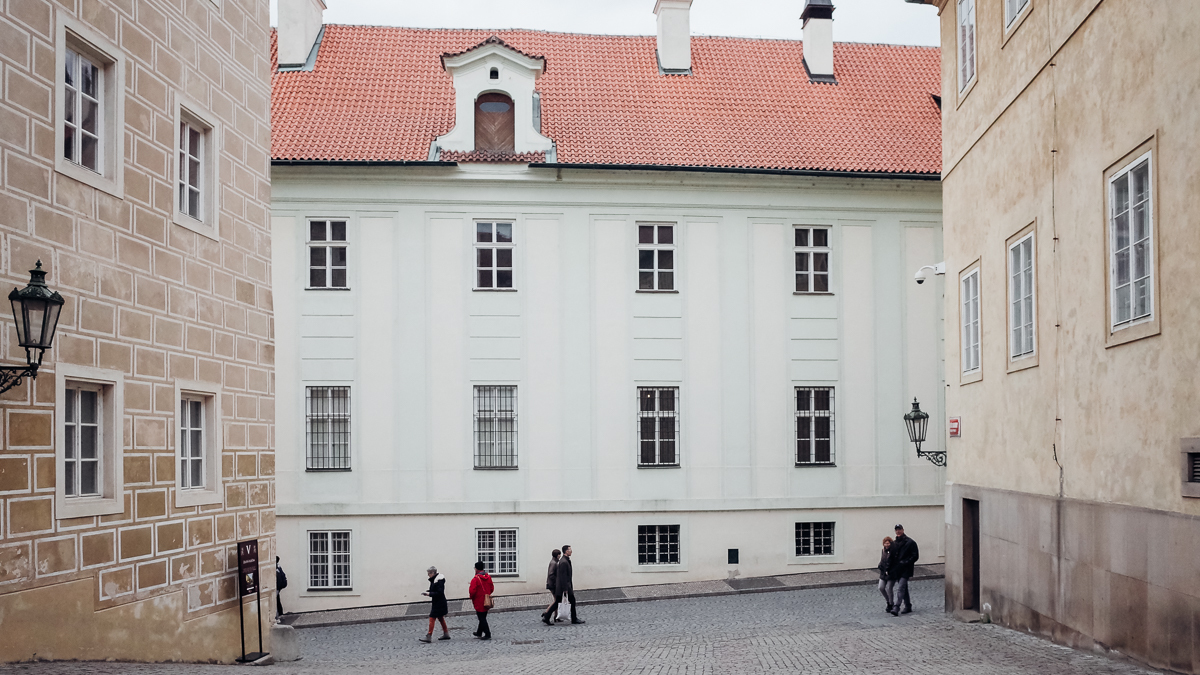
After leaving the statue of Freud behind, I take a coffee in hand and decide to walk to Prague’s castle.
More specifically, I want to visit the house of Franz Kafka on Golden Lane. Of course, no visit to Prague is complete without a tribute to Kafka, but I will write a stand-alone article for that. What matters now is that I’m walking towards the Castle. I’m walking, and I’m thinking of a football match.
The repetition of 1996 probably triggered something in my brain. I remembered the European Cup Final of 1996 played in Wembley Stadium between Germany and the Czech Republic. Germany won 2:1 in extra time. Back in the day, I had no idea that I would live in Germany one day; nor that I would visit the Czech Republic. But today, while walking the steep road to the castle, I think of that game.
Guards are checking every single person visiting the Castle. Then, I walk to the viewpoint. For a couple of minutes, all I want to do is to observe Prague. The place is full of people, and I decide to smoke. A blonde girl is approaching the viewpoint. She wears a light jacket and searches for something in her pocket. She’s searching for her smartphone, but when she finds it, something else is falling from her pocket, too. It’s money, a lot of money.
At first, she doesn’t notice it at all. She takes a photo of the view and then looks to the other side. I tell her: “Hey, I think you lost something,” and I point my finger at the money. She just says, “Oh?”. And then, “Oh!”. She collects the money quickly. “It’s all the money I have. I visited Europe for my birthday”, she says, “it’s 800 dollars, but I guess I’ll need some more”. I’m sure no European would betray the amount of money in his pocket. But right now, there is something else I’d like to know.
“Cool,” I reply, “so when were you born?” For some stupid reason, it has to be 1996. As if hearing three times about 1996 in one day, it really matters. Like there will be an alignment in the universe or something. “In 1994,” she replies. Well, this was close.

The trams of Prague
It’s not a big surprise that after walking more than 20 kilometers, I felt tired the next day; therefore, I decided to take the tram as much as possible.
Prague has an impressive network of public transport. The metro of Prague is beautiful: its style reminds me of the ’70s. But it’s the trams that stole my heart in Prague. There are new ones and old ones. The new ones are modern like elsewhere, but the old ones look like remnants of the past. They are white and red, and they seem old-fashioned.
Like in Zurich, I ride a tram whenever I feel tired. However, looking outside of a tram window is almost cinematic in Prague. The number 2 carries me around the city; the number 8 brings me back to the hotel; and the number 15 introduces me to the suburbs. I observe the life in the city, cross the Vltava river, see the transformation of human geography as the tram reaches the outskirts, and appreciate the stunning architecture of Prague anew.
Each ride with the tram resembles a movie. The director is not the driver; it’s the person that designs the itineraries. Every passenger follows their vision of transportation in Prague, and what we see out of the windows is the city as they perceive it. The rides are sometimes long. I constantly look out of the window, but I also keep an eye for incidents in the interior. The chatter of two ladies, a bunch of young Italians, and two drunk men carry on drinking.
I didn’t remember that much from my previous visit when I arrived here. This made me somehow sad. If I ever revisit Prague, though, I wouldn’t mind forgetting how nice the feeling of being on a tram is. It would be lovely to have that wonderful impression from scratch. Repetition empties my mind, though, and all I do, all day long, is to roll through Prague.
See you soon,
George
More about Prague: The city of Franz Kafka, Things to do in Prague, Best Prague Private tours
*Get my FREE Travel Writing Course*
Pin it for later
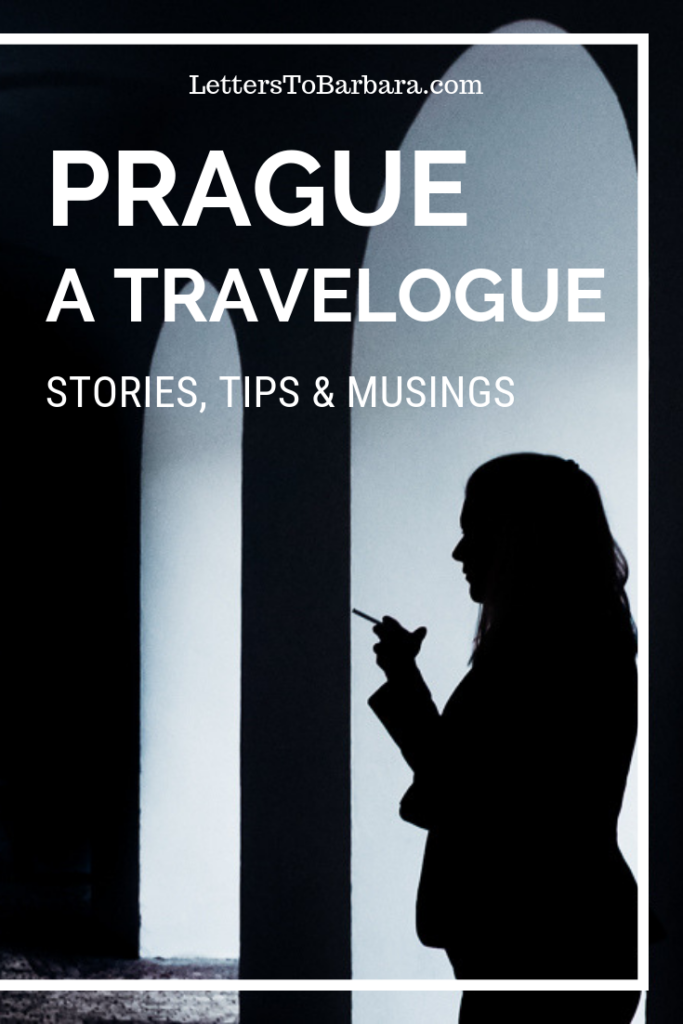
Sharing is caring. Please share the Prague: Stories & Musings with your friends.
Last Updated on July 16, 2022 by George Pavlopoulos


